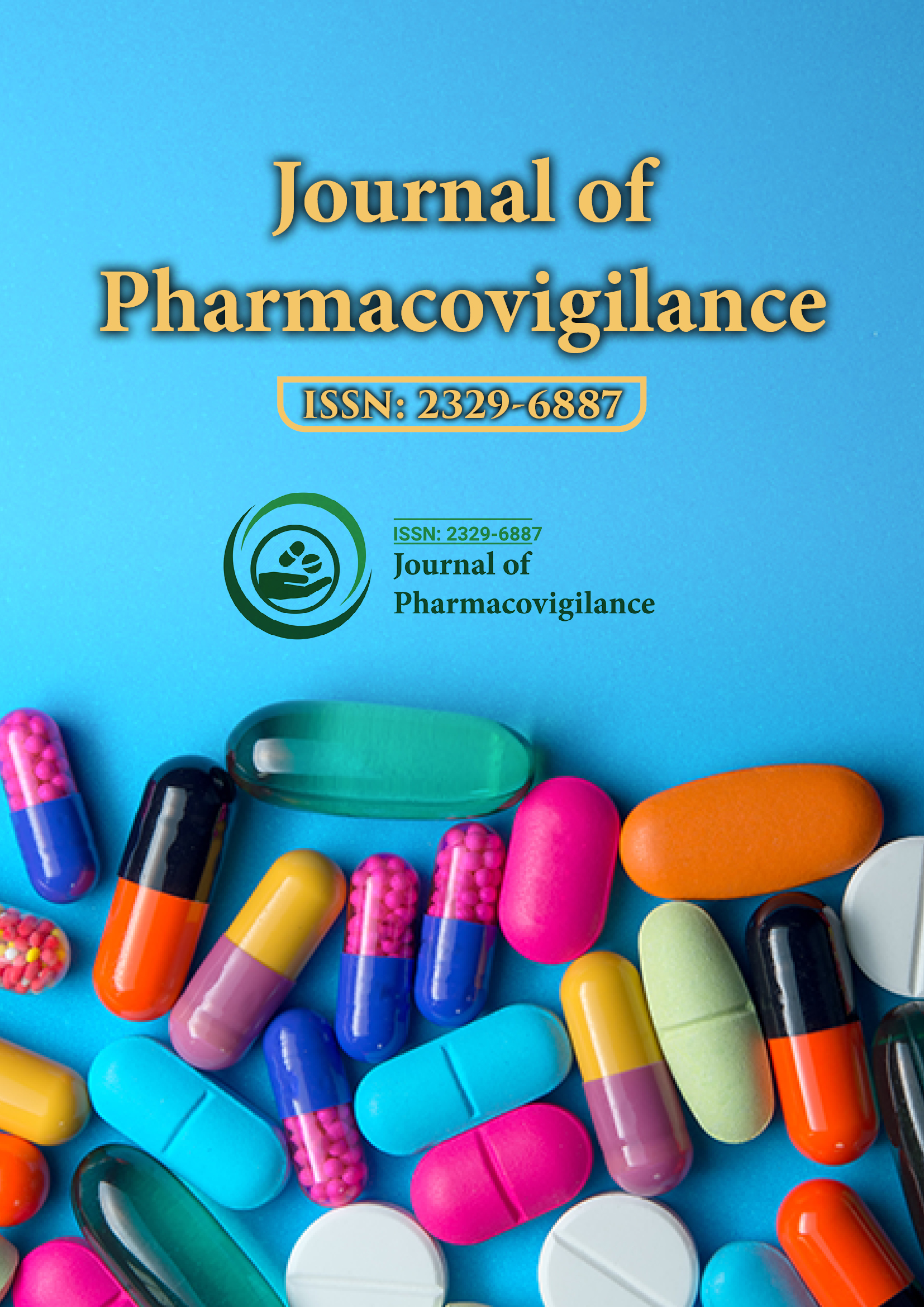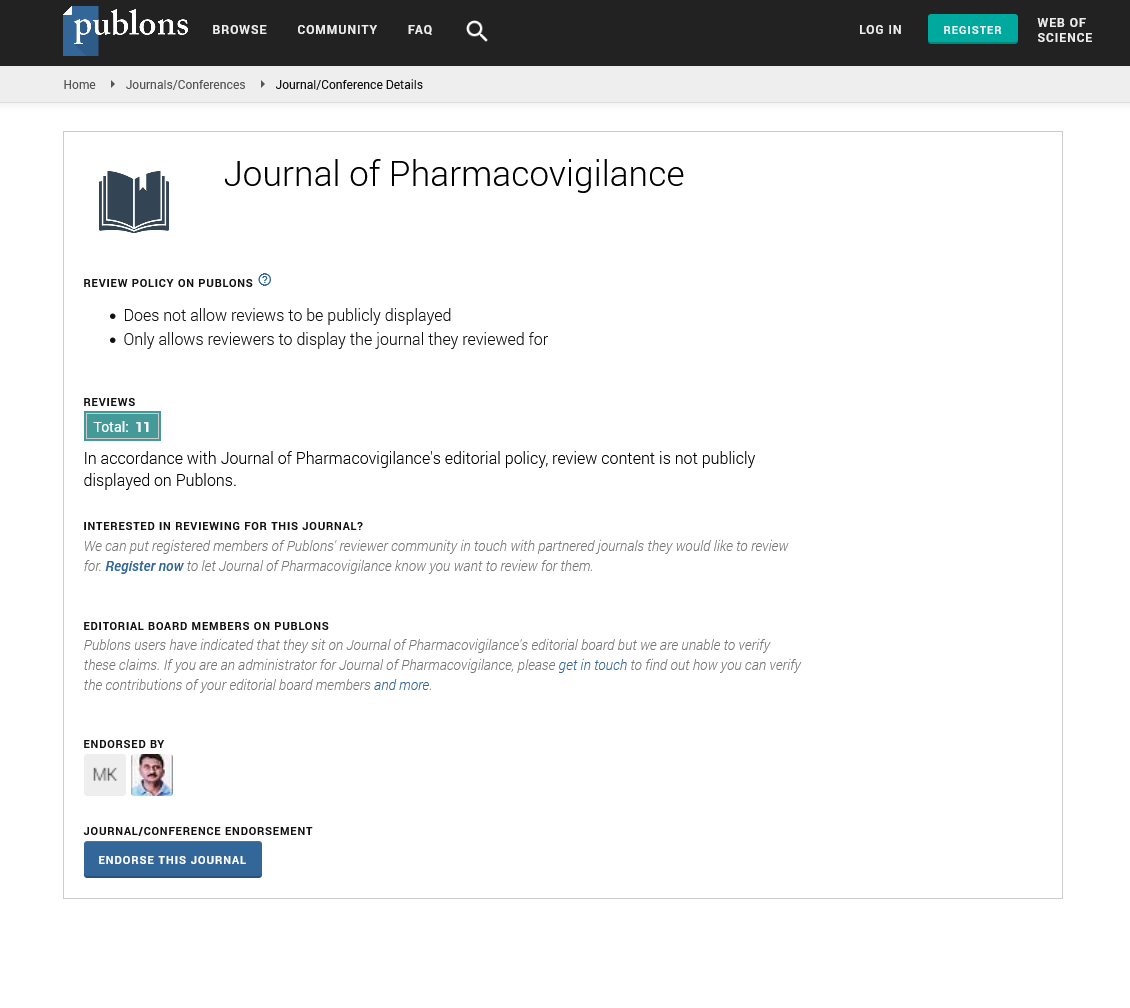Indexed In
- Open J Gate
- JournalTOCs
- The Global Impact Factor (GIF)
- RefSeek
- Hamdard University
- EBSCO A-Z
- OCLC- WorldCat
- Publons
- Euro Pub
- Google Scholar
Useful Links
Share This Page
Journal Flyer

Open Access Journals
- Agri and Aquaculture
- Biochemistry
- Bioinformatics & Systems Biology
- Business & Management
- Chemistry
- Clinical Sciences
- Engineering
- Food & Nutrition
- General Science
- Genetics & Molecular Biology
- Immunology & Microbiology
- Medical Sciences
- Neuroscience & Psychology
- Nursing & Health Care
- Pharmaceutical Sciences
Short Communication - (2025) Volume 13, Issue 1
Vaccine Safety Surveillance in the mRNA Era
Naveen Beltran*Received: 03-Mar-2025, Manuscript No. JP-25-28641; Editor assigned: 05-Mar-2025, Pre QC No. JP-25-28641 (PQ); Reviewed: 19-Mar-2025, QC No. JP-25-28641; Revised: 26-Mar-2025, Manuscript No. JP-25-28641 (R); Published: 02-Apr-2025, DOI: 10.35248/2329-6887.25.13.509
Description
The rapid development and deployment of mRNA vaccines during the COVID-19 pandemic marked a turning point in vaccinology and public health response. These novel platforms, characterized by their flexibility, speed of design, and capacity to induce robust immune responses, offered a critical solution to the global crisis. However, their novelty also brought renewed focus on vaccine safety surveillance systems. As millions of individuals worldwide received mRNA-based vaccines, monitoring and evaluating adverse events became more important than ever to ensure public confidence and to detect rare but significant safety signals. The mRNA vaccine era has thus ushered in a paradigm shift not only in immunization strategies but also in the methodologies and expectations of pharmacovigilance practices [1].
Traditional vaccine safety monitoring systems, such as passive reporting through national adverse event databases, have long served as essential tools for early signal detection. However, the unprecedented scale and speed of mRNA vaccine distribution called for enhanced surveillance mechanisms. Passive systems like VAERS in the United States, EudraVigilance in Europe, and VigiBase globally received massive volumes of reports shortly after the rollout of COVID-19 vaccines. While these systems were crucial in identifying potential associations, such as myocarditis and pericarditis following mRNA vaccination in young males, the reliance on self-reporting and physician notification introduced limitations such as underreporting, reporting bias, and data completeness issues [2–4].
To address these challenges, real-time active surveillance methods have gained prominence in the mRNA vaccine era. Programs like the CDC’s V-safe and the FDA’s Biologics Effectiveness and Safety (BEST) initiative were designed to collect structured, longitudinal data directly from vaccine recipients. These systems enabled active follow-up, use of smartphone technology, and integration with electronic health records, significantly improving the sensitivity and granularity of safety data. Through these initiatives, regulators were able to rapidly assess safety concerns and communicate risks transparently, contributing to ongoing public trust [5–7].
One of the most transformative developments in this context is the incorporation of big data analytics and machine learning into vaccine safety monitoring. The vast volume of data generated by mRNA vaccine administration required automated tools capable of detecting patterns and flagging anomalies. Algorithms were deployed to analyze adverse event frequencies, temporal associations, demographic patterns, and clinical outcomes with a level of speed and precision previously unattainable. This data-driven approach not only accelerated risk assessments but also enabled near real-time safety evaluations, critical for informing policy decisions in a rapidly evolving pandemic landscape.
Moreover, the mRNA vaccine rollout catalyzed the integration of global pharmacovigilance networks. Collaborative platforms facilitated data sharing across borders, harmonizing definitions, and streamlining responses to emerging signals. The International Coalition of Medicines Regulatory Authorities (ICMRA), for example, played a vital role in coordinating vaccine safety communication, promoting consistency in risk evaluation, and aligning regulatory responses. Such efforts were pivotal in managing public perception, especially in the face of misinformation and vaccine hesitancy [8].
Despite these advancements, several challenges remain. The novelty of mRNA technology means that long-term safety data is still being collected and analyzed. While early findings suggest a favorable risk-benefit profile, continued surveillance is essential, especially as mRNA platforms are now being explored for other infectious diseases and therapeutic areas such as cancer. Furthermore, disparities in access to surveillance tools and healthcare infrastructure can limit reporting quality in low-resource settings, potentially obscuring important safety signals on a global scale.
In the mRNA era, vaccine safety surveillance has become not only a scientific imperative but also a social responsibility. Transparent communication of risks, even when rare or uncertain, must be balanced against the overwhelming benefits of immunization. Regulatory bodies must continue to innovate and adapt, ensuring that surveillance systems remain agile, inclusive, and equipped to handle the demands of next-generation vaccine platforms. Equally important is the engagement of the public and healthcare professionals, whose participation in reporting and dialogue strengthens the collective capacity to identify, understand, and manage vaccine-related risks [9, 10].
In conclusion, the mRNA vaccine era has expanded the scope and sophistication of pharmacovigilance. By embracing digital tools, cross-sector collaboration, and proactive monitoring frameworks, the global health community has set a new standard for vaccine safety oversight. These advancements not only support the current use of mRNA vaccines but also lay the groundwork for the safe deployment of future innovations in immunization.
References
- Khan B, Shrivastava N, Sheikh NP, Singh PK, Jha HC, Parmar HS, et al. Rabies Vaccines: Journey from Classical to Modern Era. Veterinary Vaccine. 2025:100105.
- Wu JJ, Hauben M, Younus M. Current approaches in postapproval vaccine safety studies using real-world data: A systematic review of published literature. Clin Ther. 2024.
- Ciabattini A, Pettini E, Fiorino F, Polvere J, Lucchesi S, Coppola C, et al. Longitudinal immunogenicity cohort study of SARS-CoV-2 mRNA vaccines across individuals with different immunocompromising conditions: Heterogeneity in the immune response and crucial role of Omicron-adapted booster doses. EBioMedicine. 2025;113.
- Naveed Z, Li J, Wilton J, Naus M, García HA, Hawkins NM, et al. Healthcare utilization among COVID-19 mRNA vaccine-associated myocarditis cases: A matched retrospective cohort study. Int J Infect Dis. 2025;150:107287.
- Amodio D, Angelidou A, Cotugno N, Sherman AC, Levy O, Palma P, et al. Biomarkers of vaccine safety and efficacy in vulnerable populations: Lessons from the fourth international precision vaccines conference. Vaccine. 2025;43:126477.
- Crommelynck S, Grandvuillemin A, Ferard C, Mounier C, Gault N, Pierron E, et al. The enhanced national pharmacovigilance system implemented for COVID-19 vaccines in France: A 2-year experience report. Therapies. 2024.
- Chakraborty C, Lo YH, Bhattacharya M, Das A, Wen ZH. Looking beyond the origin of SARS-CoV-2: Significant strategic aspects during the five-year journey of COVID-19 vaccine development. Mol Ther Nucleic Acids. 2025;36(2).
- Recent progress, challenges (stability and in vivo distribution), and opportunities of DNA & mRNA vaccine in cancer immunotherapy.
- Layton JB, Peetluk L, Wong HL, Jiao Y, Djibo DA, Bui C, et al. Effectiveness of monovalent COVID-19 booster/additional vaccine doses in the United States. Vaccine: X. 2024;16:100447.
- Wang C, Yuan F. A comprehensive comparison of DNA and RNA vaccines. Adv Drug Deliv Rev. 2024:115340.
Citation: Beltran N (2025). Vaccine Safety Surveillance in the mRNA Era. J Pharmacovigil. 13:509.
Copyright: © 2025 Beltran N. This is an open access article distributed under the terms of the Creative Commons Attribution License, which permits unrestricted use, distribution, and reproduction in any medium, provided the original author and source are credited.

